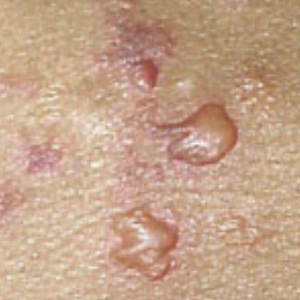Environmental factors in autoimmune bullous diseases with a focus on seasonality: new insights

All claims expressed in this article are solely those of the authors and do not necessarily represent those of their affiliated organizations, or those of the publisher, the editors and the reviewers. Any product that may be evaluated in this article or claim that may be made by its manufacturer is not guaranteed or endorsed by the publisher.
Authors
Autoimmune bullous diseases are a heterogeneous group of rare conditions clinically characterized by the presence of blisters and/or erosions on the skin and the mucous membranes. Practically, they can be divided into two large groups: the pemphigoid group and the pemphigus group, depending on the depth of the autoimmune process on the skin. A family history of autoimmune diseases can often be found, demonstrating that genetic predisposition is crucial for their development. Moreover, numerous environmental risk factors, such as solar radiation, drugs, and infections, are known. This study aimed to evaluate how seasonality can affect the trend of bullous pemphigoid and pemphigus vulgaris, especially considering the number of hospitalizations recorded over the course of individual months. The total number of hospitalizations in the twelve months of the year was evaluated. Moreover, blood chemistry assay and, for some patients, enzyme-linked immunosorbent assay were executed to evaluate antibodies. Regarding the severity of the disease, the bullous pemphigoid area index and the pemphigus disease area index score systems were used. Results showed a complex interplay between environmental factors such as seasons and autoimmune conditions.
How to Cite

This work is licensed under a Creative Commons Attribution-NonCommercial 4.0 International License.








